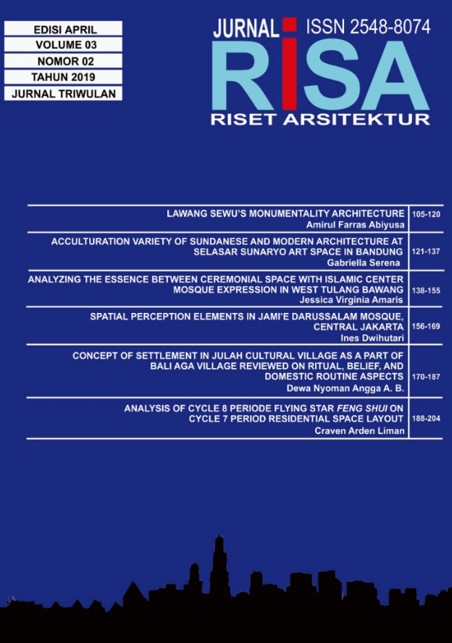CONCEPT OF SETTLEMENT IN JULAH CULTURAL VILLAGE AS A PART OF BALI AGA VILLAGE REVIEWED ON RITUAL, BELIEF, AND DOMESTIC ROUTINE ASPECTS
DOI:
https://doi.org/10.26593/risa.v3i02.3278.170-187Abstrak
Abstract- Reidfiled (1953) states that new buildings built within the vernacular architecture physically manifest and perpetuate the cultural norms and building that accumulate in them. In essence, Balinese culture is classified as an expressive type that emphasizes the religious and aesthetic values (art) as the dominant value, so the value is always prominent and present along with other elements in everyday life (Pujaastawa, 2014). This research describes Desa Adat Julah sattlement’s concept as Bali Aga Village which still survive, viewed from cultural aspect, ceremony and daily routine as dominant element and the relation of architectural form to the activity in it. This study applies the theory of Vernacular Architecture Paul Oliver: (1) Religion and Belief, (2) Ceremony and Ritual, and (3) Domestic Routine.The architectural elements of Desa Adat Julah classified into order, space and form based on D. K. Ching theory.
The research shown, beliefs factors led the village zonation based on natural factors such as mountains (ulun) and sea (teben). In ceremonial activity, the main circulation path can be called the "center" of village orientation. The concept of dwelling yard is associated with the catuspatha. The catuspatha generates a “natah” space. The canges of domestic routine also changed its form.
Key Words: Desa Adat Julah, belief, ritual and domestic routine, form, space and order, concept of settlement.












